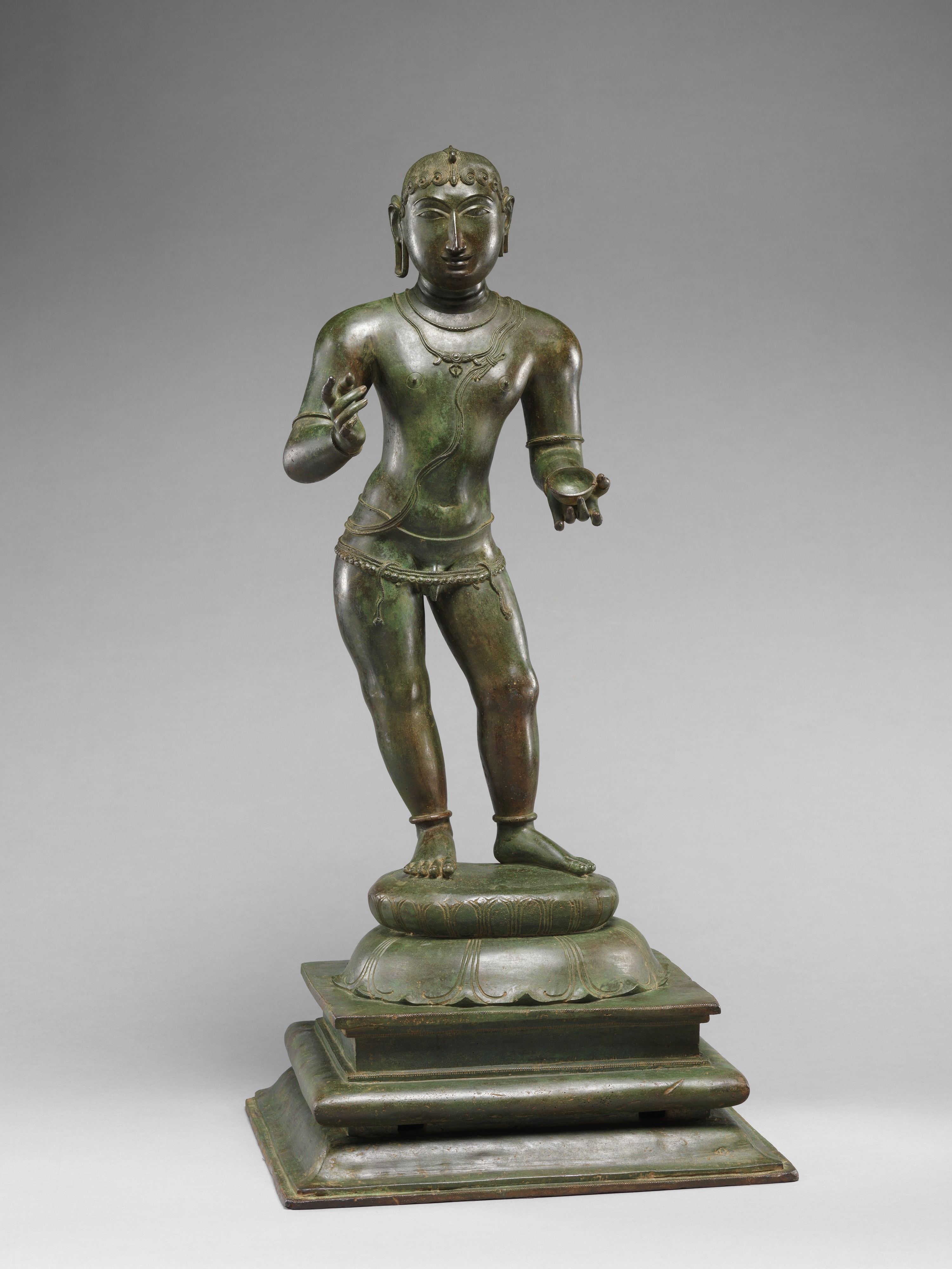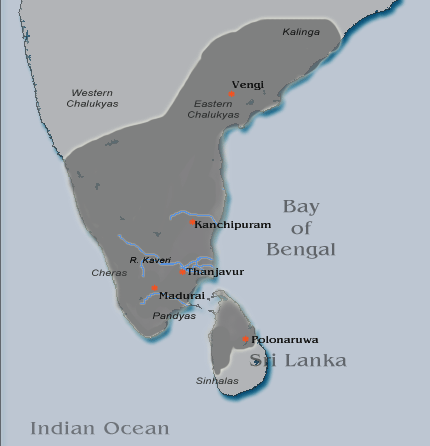|
Sambandar
Sambandar (Tamil language, Tamil: சம்பந்தர், Romanization, romanized: ''Campantar''), also referred to as Thirugnana Sambandar (Tamil language, Tamil: திருஞானசம்பந்தர், Romanization, romanized: ''Tiruñāṉacampantar''), was a Shaivism, Shaiva poet-saint of Tamil Nadu who lived sometime in the 7th century CE. According to the Tamil Shaiva tradition, he composed an of 16,000 hymns in complex meters, of which 383 (384) hymns with 4,181 stanzas have survived. These narrate an intense loving devotion (''bhakti'') to the Hindu god Shiva. Sambandar merged with the divine effulgence when he was sixteen years of age. The surviving compositions of the poet-saint are preserved in the first three volumes of the ''Tirumurai called'' Thirukkadik kaappu, and provide a part of the philosophical foundation of Shaiva Siddhanta. He is one of the most prominent of the sixty-three Nayanars, Tamil people, Tamil Shaiva Bhakti movement, bhakti saint ... [...More Info...] [...Related Items...] OR: [Wikipedia] [Google] [Baidu] |
Tevaram
The ''Tevaram'' (, ), also spelled ''Thevaram'', denotes the first seven volumes of the twelve-volume collection ''Tirumurai'', a Saivism, Shaiva narrative of epic and Puranas, Puranic heroes, as well as a Hagiography, hagiographic account of early Shaiva saints set in devotional poetry. The ''Tevaram'' volumes contain the works of the three most prominent Shaiva Tamil saints of the 7th and 8th centuries: Sambandar, Appar, and Sundarar. The three saints were not only involved in portraying their personal devotion to Shiva, but also engaged a community of believers through their songs. Their work is an important source for understanding the Shaiva Bhakti movement in the Middle kingdoms of India#The Deccan plateau and South, early medieval South India. In the 10th century, during the reign of Rajaraja I of the Chola dynasty, these saints' hymns were collected and arranged by Nambiyandar Nambi. Starting with the ''Tevaram'' along with the rest of ''Tirumurai'' and ending with the ... [...More Info...] [...Related Items...] OR: [Wikipedia] [Google] [Baidu] |
Tirumurai
''Tirumurai'' (Tamil language, Tamil: திருமுறை, meaning Holy Order) is a twelve-volume compendium of songs or hymns in praise of Shiva in the Tamil language from the 6th to the 11th century CE by various poets in Tamil Nadu. Nambiyandar Nambi compiled the first seven volumes by Appar, Sambandar, and Sundarar as ''Tevaram'' during the 12th century. During the course of time, a strong necessity was felt by scholars to compile Shaivism, Shaiva literature to accommodate other works. ''Thiruvasakam, Tiruvasakam'' and ''Tirukovayar'' by Manickavasagar are included as the eighth, nine parts are compiled as the ninth ''Tirumurai'' out of which most are unknown, and the tenth as ''Tirumandiram'' by Tirumular, the famous ''Siddhar''. The eleventh is compiled by Karaikal Ammaiyar, Cheraman Perumal and others. The contemporary Chola dynasty, Chola king was impressed by the work of Nambi and included Nambi's work in the eleventh ''Tirumurai''. Sekkilar's ''Periya Purana ... [...More Info...] [...Related Items...] OR: [Wikipedia] [Google] [Baidu] |
Sirkazhi
Sirkazhi (), also spelled as Sirkali and Siyali, is a selection grade municipal town in Mayiladuthurai district in Tamil Nadu, India. It is located from the coast of the Bay of Bengal, and from the state capital Chennai. Sirkazhi was a part of Thanjavur district until 1991 and has later been part of Nagapattinam district. The town covers an area of and in 2011 had a population of 34,927. It is administered by a second grade municipality. Sirkazhi is part of the Cauvery delta region and agriculture is the major occupation. Roads are the main means of transportation; the town has of district roads, including a national highway. The town is believed to be of significant antiquity and has been ruled by the Medieval Cholas, Later Cholas, Later Pandyas, the Vijayanagar Empire, the Marathas and the British. The Tamil trinity of Carnatic music; Arunachala Kavirayar (1711–78), Muthu Thandavar (1525–1600) and Marimutthu Pillai (1712–87), originated from Sirkazhi. The Saiv ... [...More Info...] [...Related Items...] OR: [Wikipedia] [Google] [Baidu] |
Appar
Appar (), also referred to as Tirunavukkaracar () or Navukkarasar, was a seventh-century Tamil Shaiva poet-saint. Born in a peasant Shaiva family, raised as an orphan by his sister, he lived about 80 years and is generally placed sometime between 570 and 650 CE.Zvelebil 1974, p. 95 Appar composed 4,900 devotional hymns to the god Shiva, out of which 313 have survived and are now canonized as the 4th to 6th volumes of ''Tirumurai''. One of the most prominent of the sixty-three revered Nayanars, he was an older contemporary of Sambandar. His images are found and revered in Tamil Shiva temples. His characteristic iconography in temples show him carrying a farmer's small hoe – a gardening tool and weed puller. Names Appar is also known as Tirunavukkaracar (''lit.'' "King of the Tongue, Lord of Language"). His birth-name was Marulneekkiyar. He was renamed Dharmasenar while he studied and later served as the head of a Jain monastery. After he returned to Shaivism and began composi ... [...More Info...] [...Related Items...] OR: [Wikipedia] [Google] [Baidu] |
Sundarar
Sundarar (), also referred to as Chuntarar, Chuntaramurtti, Nampi Aruran or Tampiran Tolan, was an eighth-century poet-saint of Tamil Shaiva Siddhanta tradition of Hinduism. He is among the Tevaram trio, and one of the most prominent Nayanars, the Shaiva bhakti (devotional) poets of Tamil Nadu. His hymns form the seventh volume of the ''Tirumurai called Thiruppattu'', the twelve-volume compendium of Shaiva Siddhanta. His songs are considered the most musical in ''Tirumurai'' in Tamil language. His life and his hymns in the Tevaram are broadly grouped in four stages. First, his cancelled arranged marriage through the intervention of Shiva in the form of a mad petitioner and his conversion into a Shaiva devotee. Second, his double marriage to temple dancers Paravai and Cankali with their stay together in Tiruvarur. Third, his blindness and then return of his sight. Finally, his reflections on wealth and material goods. Names Sundarar is referred to by many names. Sundarar (Cunta ... [...More Info...] [...Related Items...] OR: [Wikipedia] [Google] [Baidu] |
Nayanars
The Nayanars (or Nayanmars; , and later 'teachers of Shiva') were a group of 63 Tamils, Tamil Hindu saints living during the 6th to 8th centuries CE who were devoted to the Hindu god Shiva. Along with the Alvars, their contemporaries who were devoted to Vishnu, they influenced the Bhakti movement in Middle kingdoms of India#The Deccan plateau and South, early medieval South India. The names of the Nayanars were first compiled by Sundarar. The list was expanded by Nambiyandar Nambi during his compilation of material by the poets for the ''Tirumurai'' collection, and would include Sundarar himself and Sundarar's parents. The Nalvar () are the three foremost Nayanars Appar, Sundarar, Sambandar along with Manikkavasagar, Manikkavacakar. History The list of the Nayanars was initially compiled by Sundarar (Sundararmurthi). In his poem ''Tiruthonda Thogai'' he sings, in eleven verses, the names of the Nayanar saints up to Karaikkal Ammaiyar, and refers to himself as "the servant of ser ... [...More Info...] [...Related Items...] OR: [Wikipedia] [Google] [Baidu] |
Nambiyandar Nambi
Thirunaraiyur Nambiyandar Nambi was an eleventh-century Shaiva scholar of Tamil Nadu in South India who compiled the hymns of Sambandar, Appar and Sundarar and was himself one of the authors of the eleventh volume of the canon of the Tamil liturgical poetry of Shiva, the Tirumurai. Birth and life Nambiyandar Nambi was born in the town of Thirunaraiyur into the tradition of the Adi Shaivites, brahmin priests in the temples of Lord Shiva. In ''Nambiyandar Nambi Puranam'' also called as ''Tirumurai Kanda Puranam'', Nambi identifies his patron, the great Arumolivarman alias Rajaraja Chola, as ராசா ராசா மன்னவன் ''அபயகுல சேகரன்'' requested him to collect the hymns of the three great poet-saints Sambandar, Appar and Sundarar. Nambi managed to get palm-leaf manuscripts of the hymns, though some had been eaten away by termites. They were able to recover around ten percent of the entire set of hymns. Nambi also wrote a memoir of the ... [...More Info...] [...Related Items...] OR: [Wikipedia] [Google] [Baidu] |
Rajaraja Chola I
Rajaraja I (Middle Tamil: ''Rājarāja Cōḻaṉ''; Classical Sanskrit: ''Rājarāja Śōḷa''; 3 November 947 – January/February 1014), also known as Rajaraja the Great, was a Chola Empire, Chola emperor who reigned from 985 to 1014. He was known for his conquests of South India, southern India and Anuradhapura Kingdom of Sri Lanka, as well as increasing Chola influence across the Indian Ocean. Rajaraja's birth name is variously given as Arul Mozhi Varman and Arul Moli Varman. Rajaraja's empire encompassed vast territories, including regions of the Pandya dynasty, Pandya country, the Chera dynasty, Chera country, and northern Sri Lanka. He also extended his influence over strategic islands such as Lakshadweep, Thailand, Thiladhunmadulu atoll, and parts of the Maldives in the Indian Ocean. His conquests weren't limited to the south; he also launched successful campaigns against the Western Ganga dynasty, Western Gangas and the Western Chalukya Empire, Western Chalukyas, ex ... [...More Info...] [...Related Items...] OR: [Wikipedia] [Google] [Baidu] |
Shaivite
Shaivism (, , ) is one of the major Hindu traditions, which worships Shiva as the supreme being. It is the second-largest Hindu sect after Vaishnavism, constituting about 385 million Hindus, found widely across South Asia (predominantly in Southern India), Sri Lanka, and Nepal.Keay, p.xxvii. The followers of Shaivism are called Shaivas or Shaivites. According to Chakravarti, Shaivism developed as an amalgam of pre-Aryan religions and traditions, Vedic Rudra, and post-Vedic traditions, accommodating local traditions and Yoga, puja and bhakti. According to Bisschop, early shaivism is rooted in the worship of vedic deity Rudra. The earliest evidence for sectarian Rudra-Shiva worship appears with the Pasupata (early CE), possibly owing to the Hindu synthesis, when many local traditions were aligned with the Vedic-Brahmanical fold. The Pāśupata movement rapidly expanded throughout North India, giving rise to different forms of Shaivism, which led to the emergence of variou ... [...More Info...] [...Related Items...] OR: [Wikipedia] [Google] [Baidu] |
Shaivism
Shaivism (, , ) is one of the major Hindu denominations, Hindu traditions, which worships Shiva as the Para Brahman, supreme being. It is the Hinduism#Demographics, second-largest Hindu sect after Vaishnavism, constituting about 385 million Hindus, found widely across South Asia (predominantly in South India, Southern India), Sri Lanka, and Nepal.Keay, p.xxvii. The followers of Shaivism are called Shaivas or Shaivites. According to Chakravarti, Shaivism developed as an amalgam of pre-Aryan religions and traditions, Vedic Rudra, and post-Vedic traditions, accommodating local traditions and Yoga, puja and bhakti. According to Bisschop, early shaivism is rooted in the worship of vedic deity Rudra. The earliest evidence for sectarian Rudra-Shiva worship appears with the Pasupata (early CE), possibly owing to the Origins of Hinduism, Hindu synthesis, when many local traditions were aligned with the Brahmanism, Vedic-Brahmanical fold. The Pāśupata movement rapidly expanded through ... [...More Info...] [...Related Items...] OR: [Wikipedia] [Google] [Baidu] |
Shiva
Shiva (; , ), also known as Mahadeva (; , , Help:IPA/Sanskrit, [mɐɦaːd̪eːʋɐh]) and Hara, is one of the Hindu deities, principal deities of Hinduism. He is the God in Hinduism, Supreme Being in Shaivism, one of the major traditions within Hinduism. Shiva is known as ''The Destroyer'' within the Trimurti, the Hinduism, Hindu trinity which also includes Brahma and Vishnu. In the Shaivite tradition, Shiva is the Supreme Lord who creates, protects and transforms the universe. In the goddess-oriented Shaktism, Shakta tradition, the Supreme Goddess (Devi) is regarded as the energy and creative power (Shakti) and the equal complementary partner of Shiva. Shiva is one of the five equivalent deities in Panchayatana puja of the Smarta Tradition, Smarta tradition of Hinduism. Shiva has many aspects, benevolent as well as fearsome. In benevolent aspects, he is depicted as an Omniscience, omniscient yogi who lives an Asceticism#Hinduism, ascetic life on Kailasa as well as a house ... [...More Info...] [...Related Items...] OR: [Wikipedia] [Google] [Baidu] |





